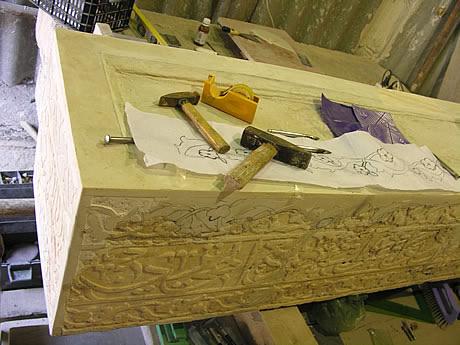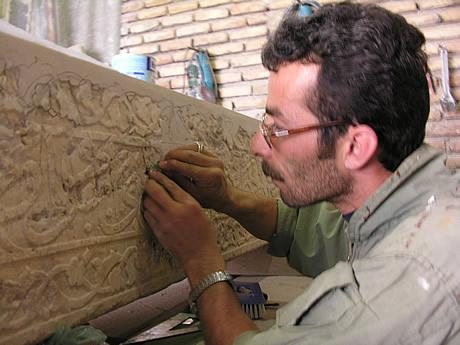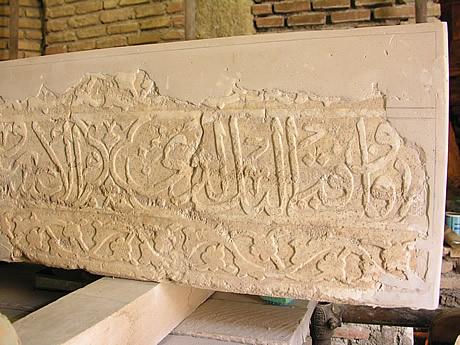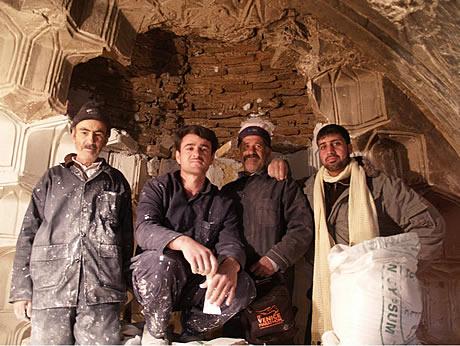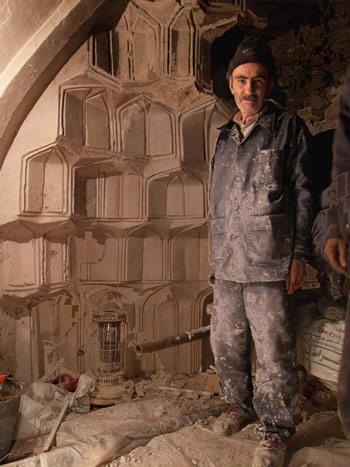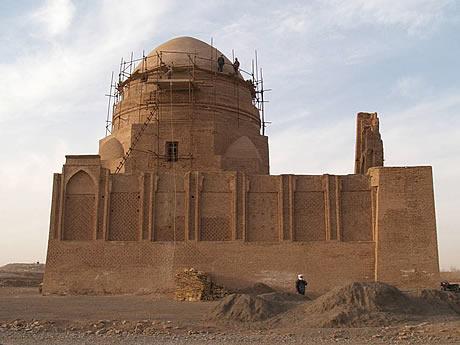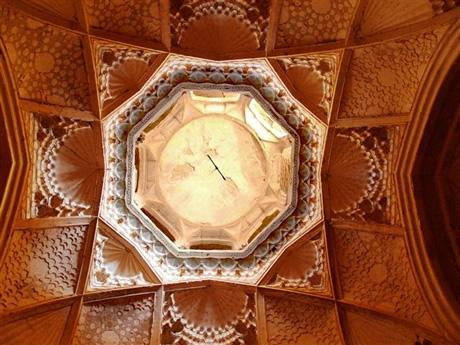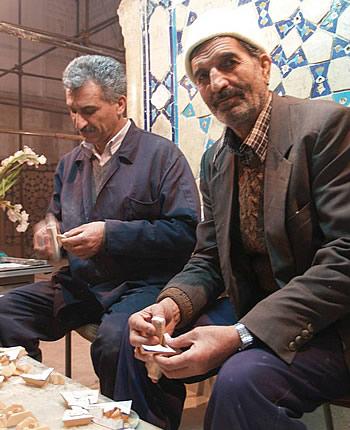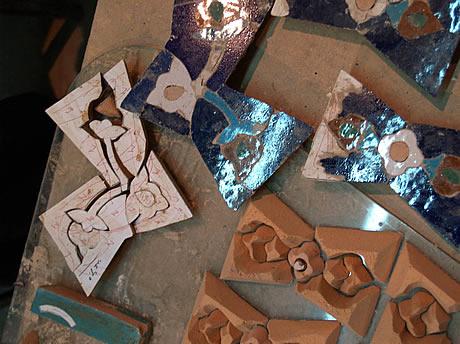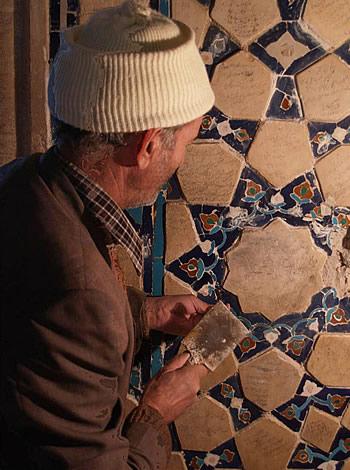Stone Carving
These are the most important tools of the stonemason restorer: the paper design copied or derived from motifs left on the memorial; adhesive tape and carbon paper to help transfer patterns; various hammers; and screwdriver blades for use as chisels. The design has been traced onto the ‘artificial stone’ on the top of the memorial, …
